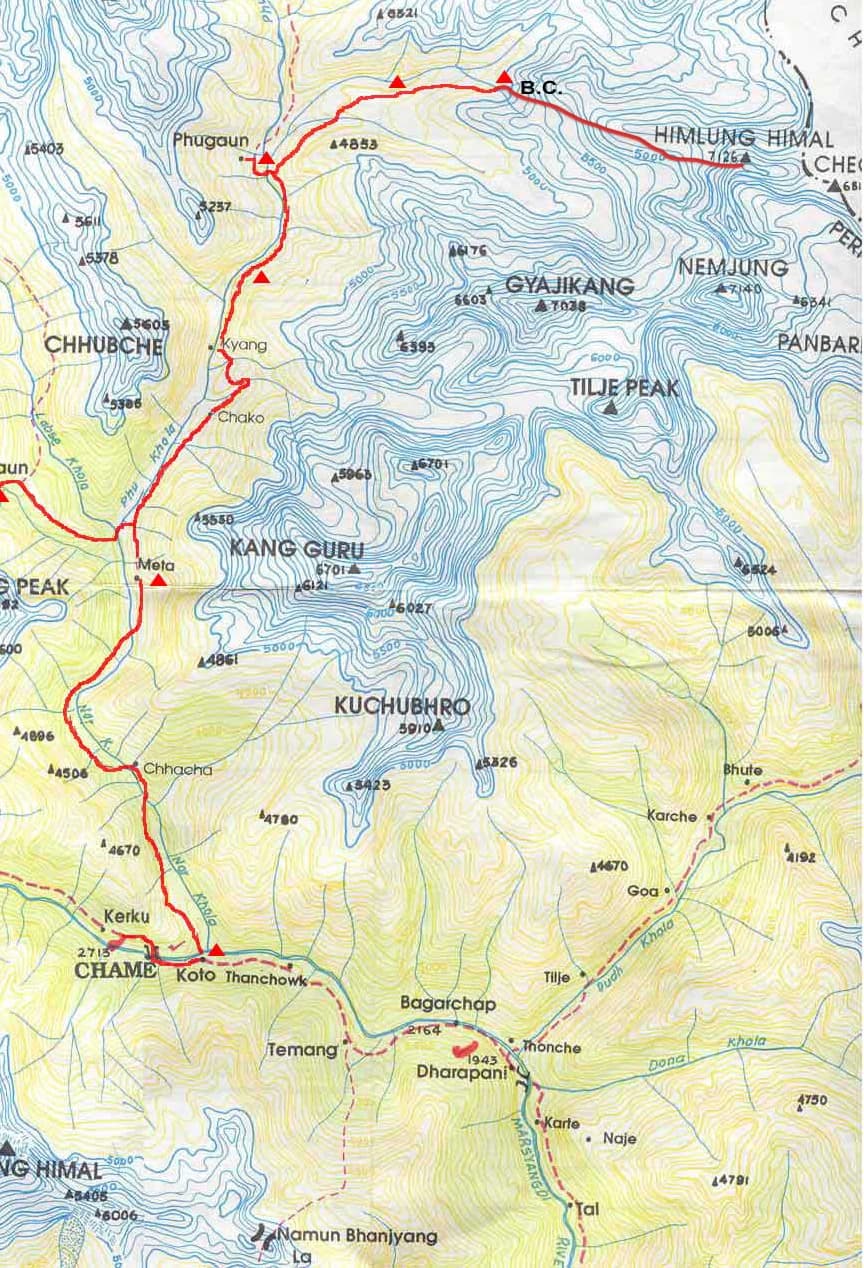Himlung Himal (7,126m) is often considered one of the most accessible and "safest" 7,000m peaks, making it an ideal step up for experienced climbers transitioning from 6,000m peaks to higher expeditions. While not extremely technical, its altitude, remoteness, and long summit day present significant challenges.
Key Challenges
- Technical Difficulty: Classified as AD+ (Assez Difficile Supérieur / Fairly Difficult) in the French Alpine Grading System. The climb is semi-technical, requiring proficiency in fixed-line work and glacier travel but avoiding sustained, steep rock or ice climbing pitches characteristic of "Very Difficult" routes.
- Altitude and Endurance: The greatest challenge is the sheer altitude and the long, physically demanding summit push from Camp 3, which involves a sustained 1,100m vertical gain.
- Remoteness: The trek to Base Camp through the Nar-Phu Valley is remote, adding to the logistical and physical commitment of the expedition.
- Approach: Guided expeditions follow the standard South-West arête. The ascent is a sustained and committing climb involving approximately 20 pitches on steep snow and ice slopes.
Our guided expeditions follow the Northwest Ridge Route. The ascent is a classic, expedition-style climb involving extensive glacier travel and utilizing fixed ropes on the steeper, icy sections above Camp 2.
- Base Camp to Camp 1: Glacier Familiarization - Ascend over moraines and the glacier to establish or stock Camp 1. This section is generally non-technical but requires careful navigation of the glacier. Descend back to Base Camp.
- Camp 1 to Camp 2: Route Fixing and Acclimatization - Climb from C1 to C2, which often involves traversing steeper, sometimes icy, slopes and scree, requiring the use of fixed ropes. Sleep at C2 (or C1) before descending for final rest.
- Summit Push: After adequate rest, move up the mountain with the intention of going to the top. The ascent plan involves sleeping one night each at Camp 1, Camp 2 and Camp 3. From Camp 3 the route involves climbing a steep 45∘-50∘ snow and ice slope for the final 1,100m to the summit. The round trip can last 10 to 14 hours.
- Exposure and Altitude: The climb involves long sections of sustained climbing at extreme altitude (above 6,000m), particularly the summit ridge, which is exposed to wind and cold.
- Objective Hazards: Like any major Himalayan peak, objective dangers such as serac fall, crevasses on the glacial approach, and the potential for sudden weather changes are prevelant.











